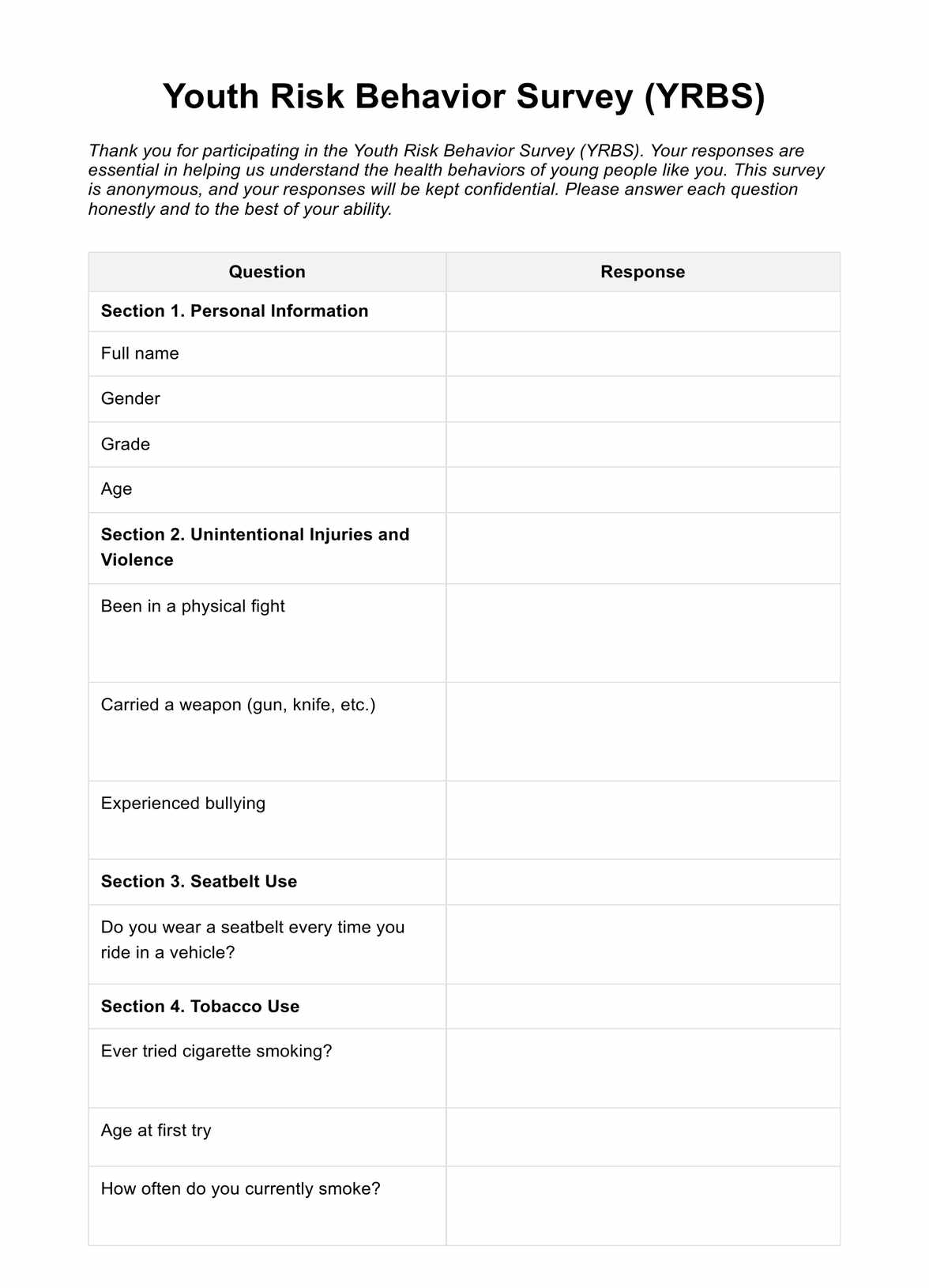Educators, researchers, health professionals, and policymakers use YRBSS to assess youth behaviors.

Conduct comprehensive Youth Risk Behavior Surveys (YRBSS) with our guide. Understand the process, benefits, and how Carepatron simplifies the task.
Educators, researchers, health professionals, and policymakers use YRBSS to assess youth behaviors.
YRBSS is conducted regularly to monitor trends and assess risk behaviors among high school students.
The survey collects anonymous data on behaviors like substance use, sexual activity, and mental health, helping shape targeted interventions and policies.
EHR and practice management software
*No credit card required
Free
$0/usd
Unlimited clients
Telehealth
1GB of storage
Client portal text
Automated billing and online payments